How to Choose a Color Scheme for an Interior Yourself Without Overpaying for a Designer
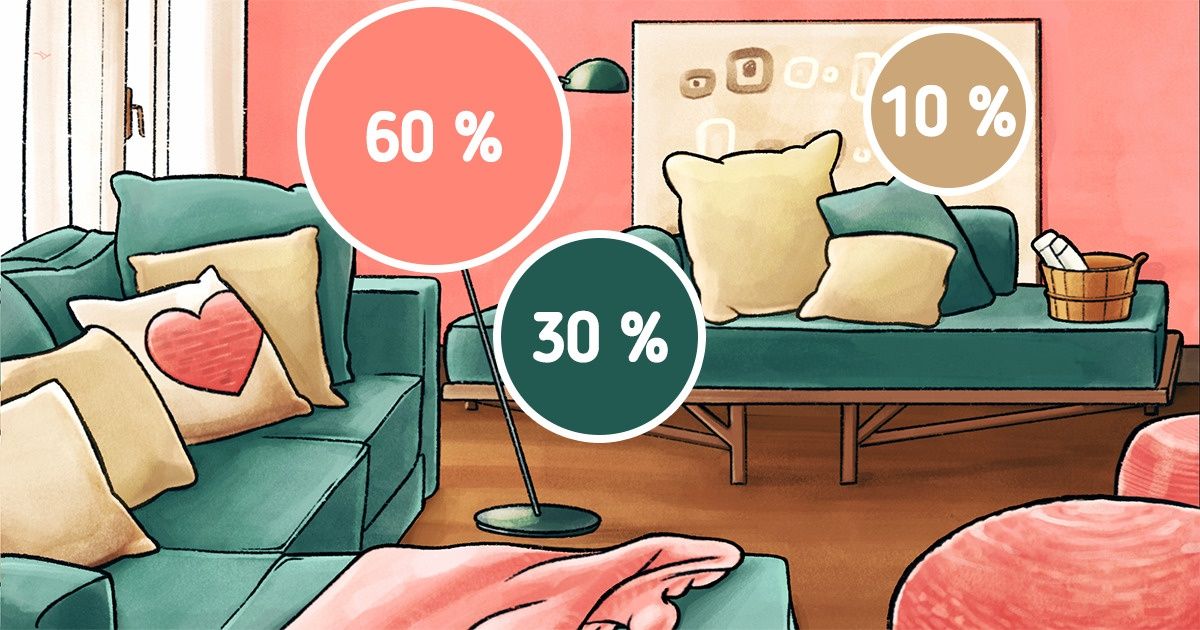
You don’t need to have a designer education to select a color scheme for your house or apartment. However, you do need to have a basic understanding of the ratio of shades and their correct distribution. A pre-planned color scheme for interior decoration, including the color of the walls and furniture, will help create a harmonious and comfortable space for any purpose.
5-Minute Crafts is going to tell you how to easily choose a color palette for your interior using simple schemes of a color circle. The 60—30—10 rule will help you balance the shades perfectly.
Types of color schemes
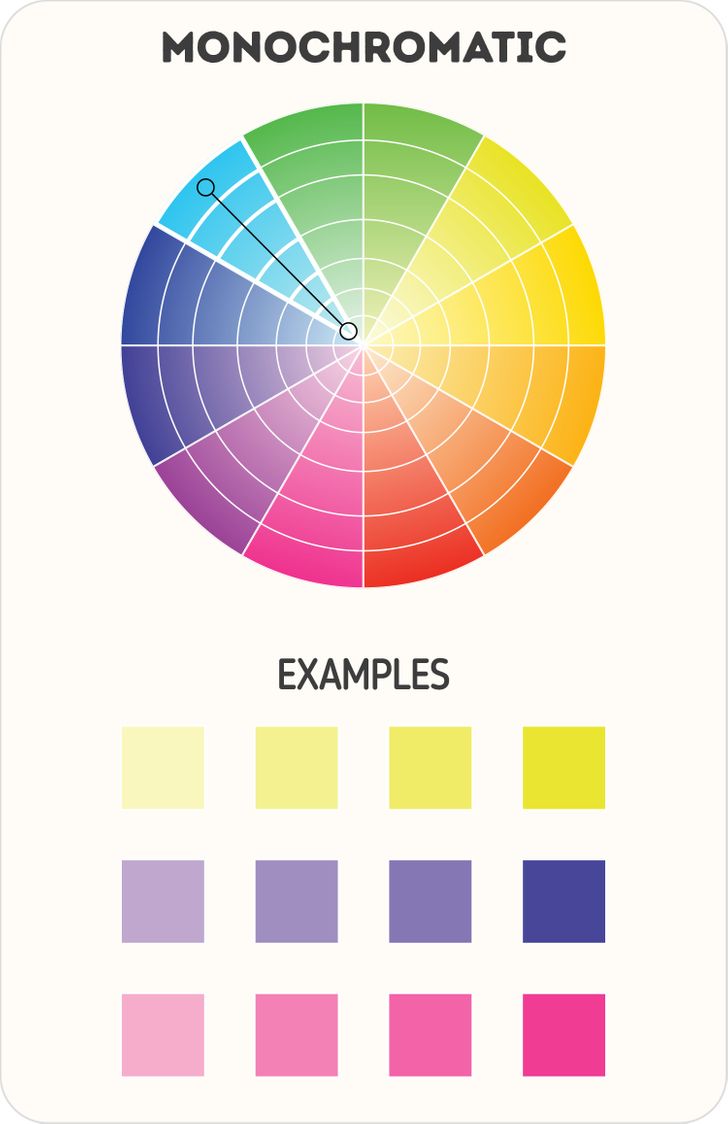
- Monochromatic is used as one color and its various shades. You can consider several variations of brightness and saturation to find the most suitable ones and build the necessary color scheme from them. Pay attention to neutral colors, such as beige, grayish-brown, or gray. They will give elegance to the interior.
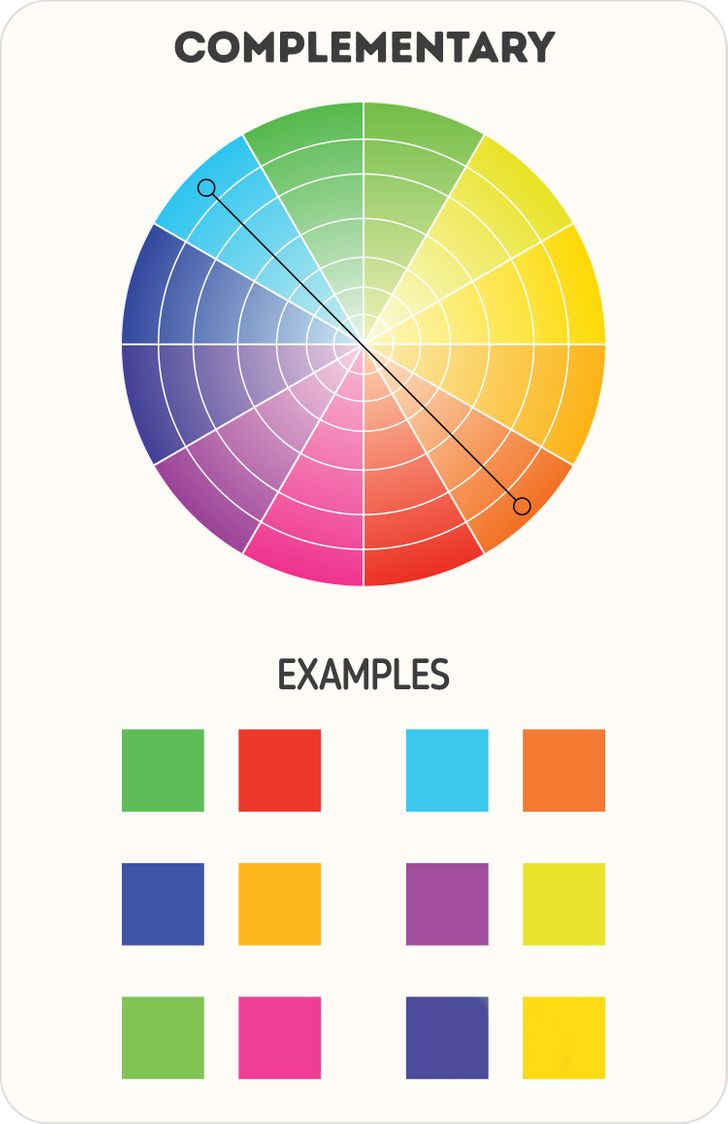
- Complementary is a color scheme with 2 colors that are located opposite of each other on the circle. It can be quite bright with high contrast if the colors with the same saturation are used. This scheme will naturally include a warm and a cool color since they are located on opposite sides of the wheel.
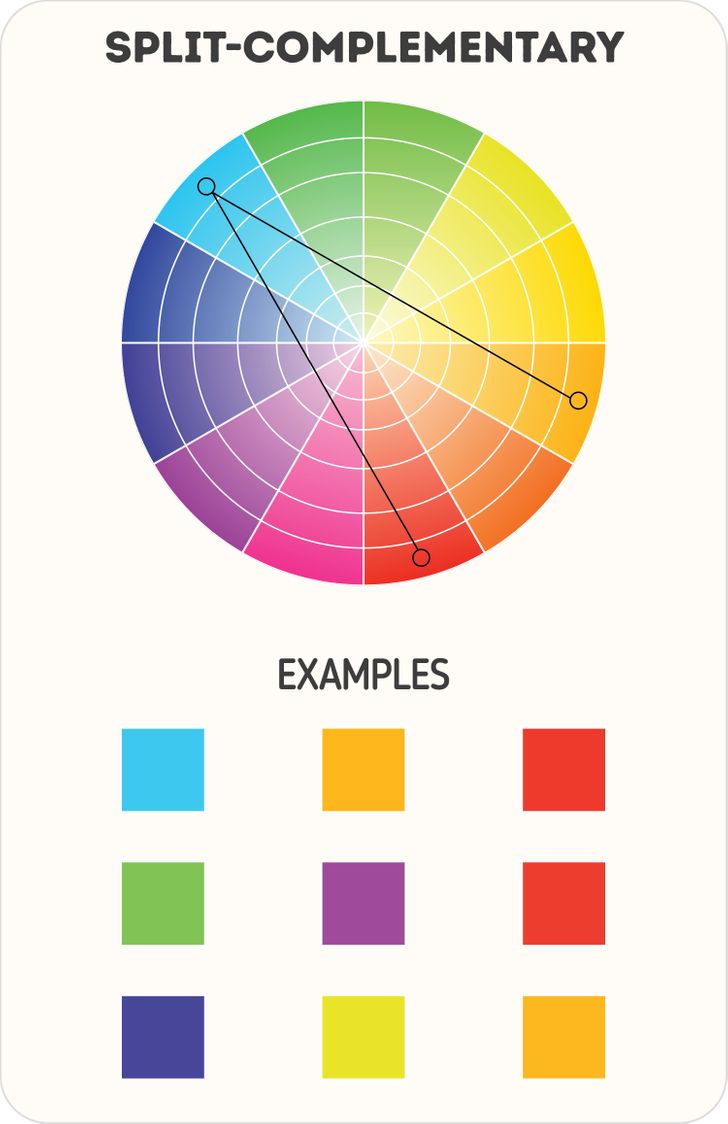
- Split-complementary is when 3 colors are used. At first, one color is selected, then later, the colors on either side of the selected one are included. It’s less dramatic compared to a complementary scheme.
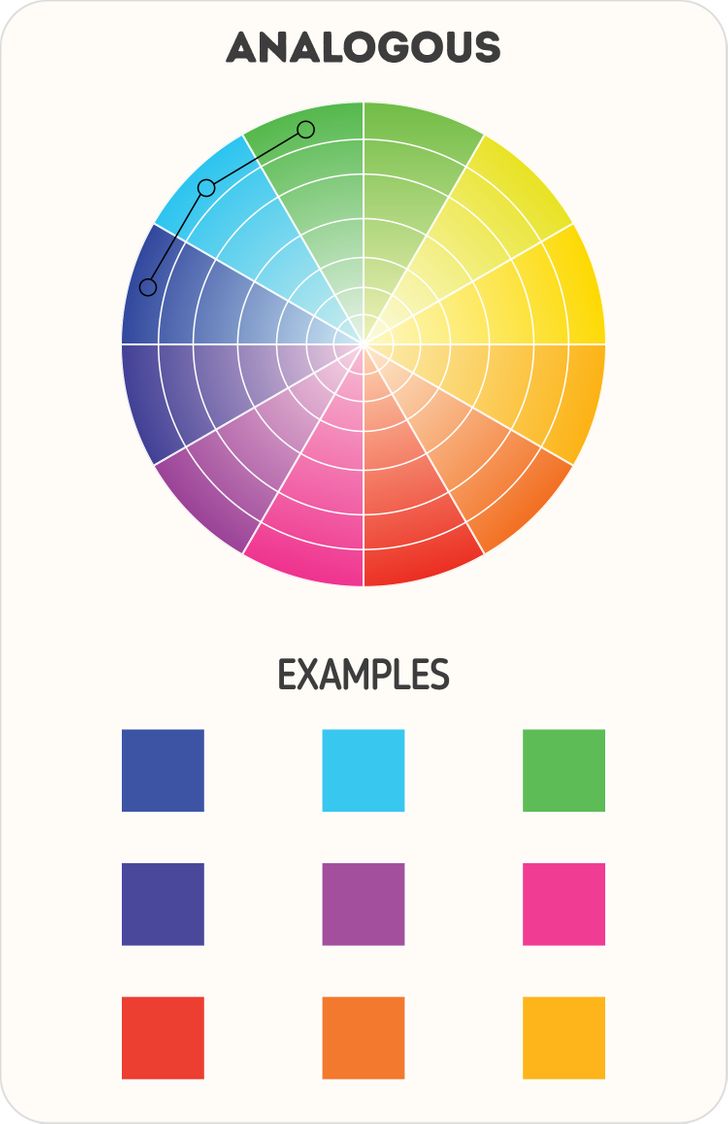
- Analogous is a scheme that uses 3 colors that are located next to each other. It can be quite harmonious and relaxing. A scheme of blue, light blue, and green is an example of an analogous color scheme.
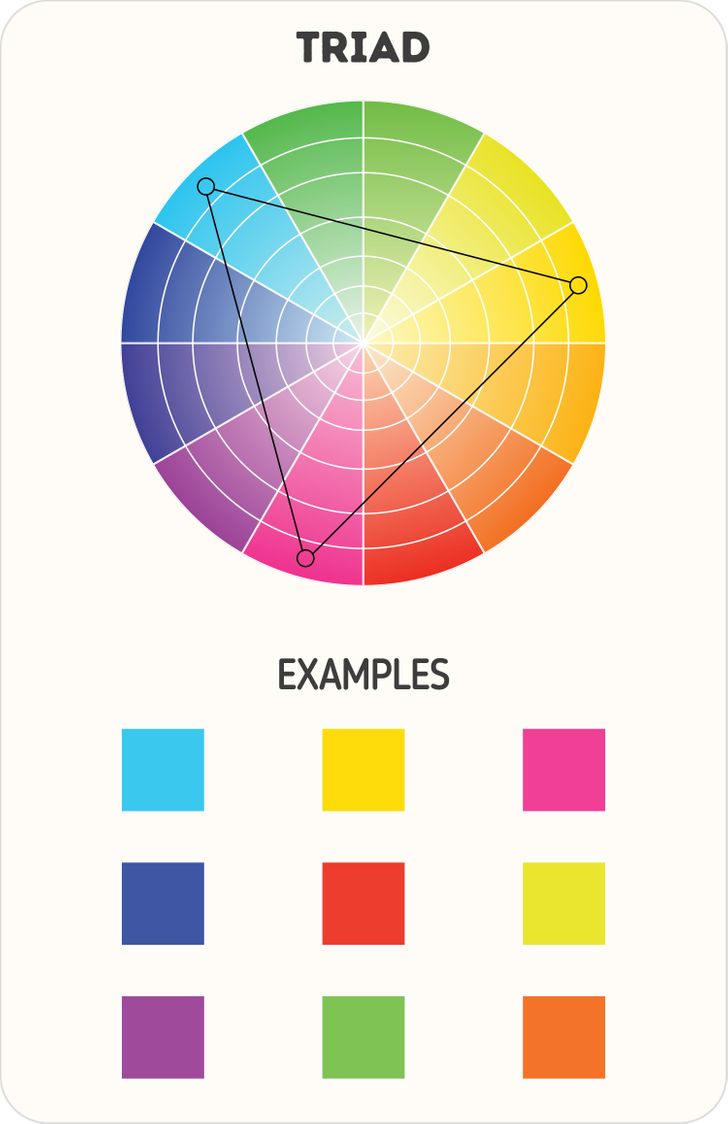
- Triad is a scheme with 3 colors that are evenly located around the color wheel. For example, it can include violet, green, and orange hues. Such a palette benefits from choosing one color to dominate and 2 other colors as accents.
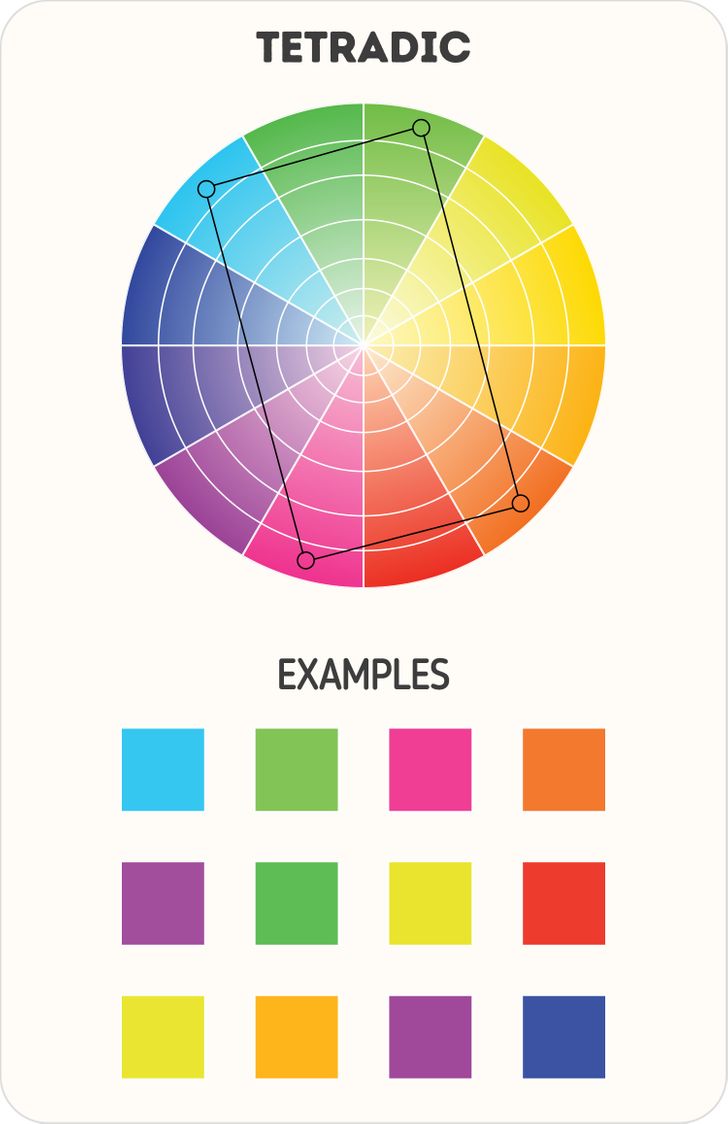
- Tetradic is a scheme that uses 4 colors. The work can be more challenging but eventually, you will be able to create a full and rich color scheme. Using a dominating color with 3 accents is one way to harmonize a tetradic color scheme. Moreover, you can opt for muted tones to balance the shades.
The 60—30—10 rule
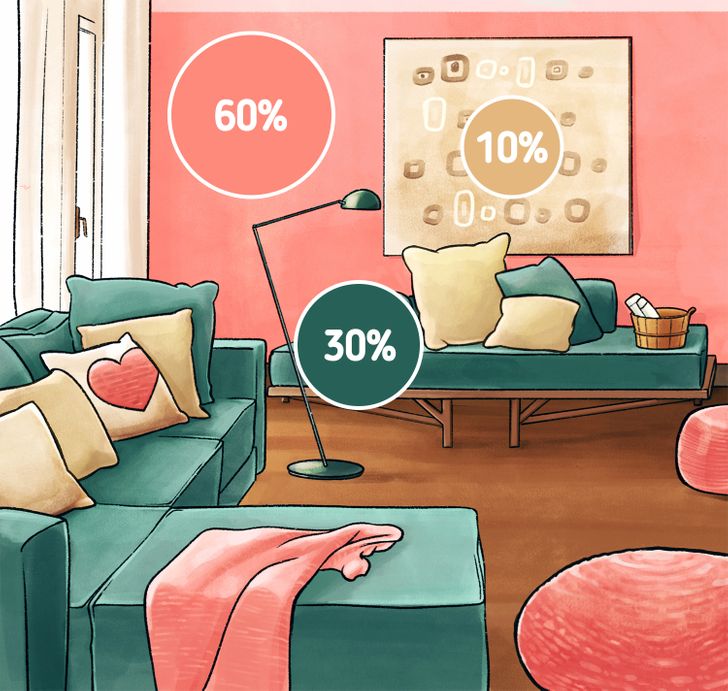
Opt for room colors in the 60% + 30% + 10% ratio. This is an old rule used by interior designers that aims to balance color schemes. The formula is designed to make the eyes feel comfortable moving from one focal point to another.
The rule is extremely simple in use: 60% is the dominating shade, 30% is a secondary color, and 10% is an accent color. Even if the palette has more than 3 colors (though it’s better not to use more than 5), such balance will look better in the interior and be perceived richer, visually.